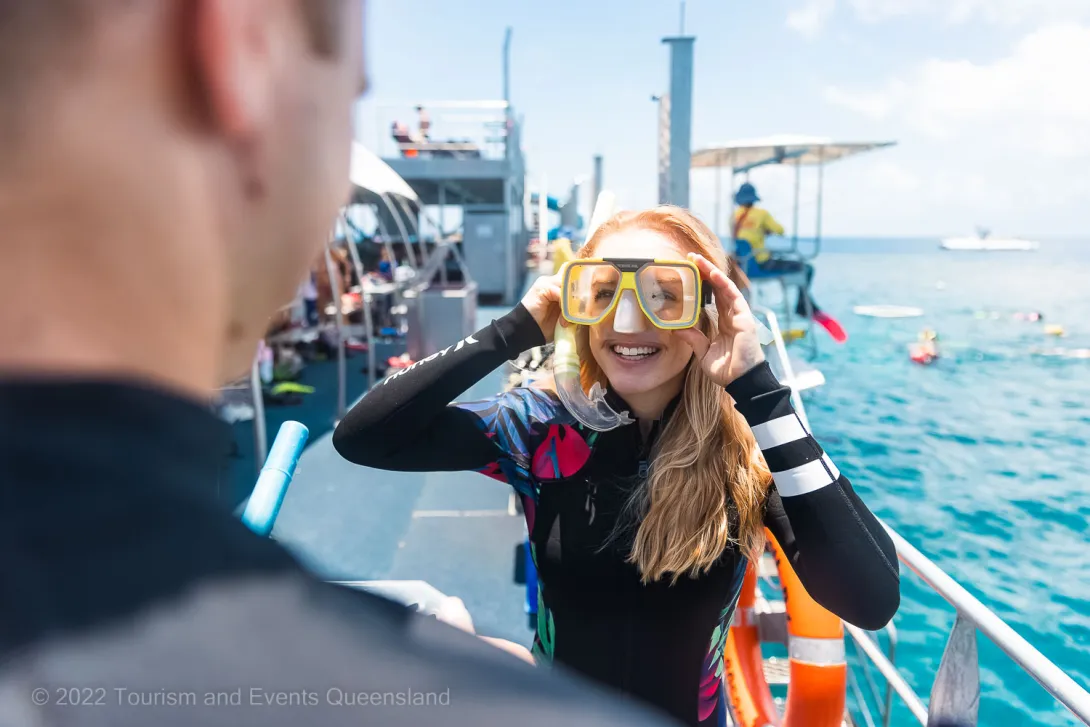- On this page:
- Reef 2050 Plan
- Management plan and Reef Blueprint
- Aboriginal and Torres Strait Islander Heritage Strategy
- Tourism Management Action Strategy
- Science for management
- Management tools
- Management partnerships
- Strategic assessment
- Managing Reef threats
- Visitor contributions
The Great Barrier Reef Marine Park Authority is Australia’s key management agency for the Great Barrier Reef, and works with government, industry and community to protect this spectacular area.
For over 50 years our work has been guided by the Great Barrier Reef Marine Park Act 1975 and the Great Barrier Reef Marine Park Regulations 2019, among relevant legislation provides for the long-term protection and conservation of the Reef’s environment, biodiversity and heritage values.
A range of regulatory tools also enable us to manage multiple activities in the Marine Park, including our Zoning Plan, plans of management, permits and policies, as well as a range of partnerships and management arrangements.
The Marine Park is widely recognised as one of the best managed marine-protected areas in the world. Its management involves ensuring environmental protection while allowing for national, state and community interests in sustainable use.
Reef 2050 Plan
To achieve this protection and sustainable use, we’re working with other Australian and Queensland government agencies, industries and the community to implement the Reef 2050 Long-term Sustainability Plan, an overarching framework for Reef management.
The Reef 2050 Integrated Monitoring and Reporting Program is a key part of the Reef 2050 Plan, and will underpin the evaluation of whether the Reef 2050 Plan is on track to meet its outcomes, objectives and targets.
Reef 2050 includes a Reef Trust, which will use Australian Government and private funds to focus on improving coastal habitats and water quality throughout the Reef and adjacent catchments.
Our Outlook Report and strategic assessment highlight threats to the Reef and its values, helping us to understand the priority areas for management and feeding into the Reef 2050 Long-term sustainability plan.
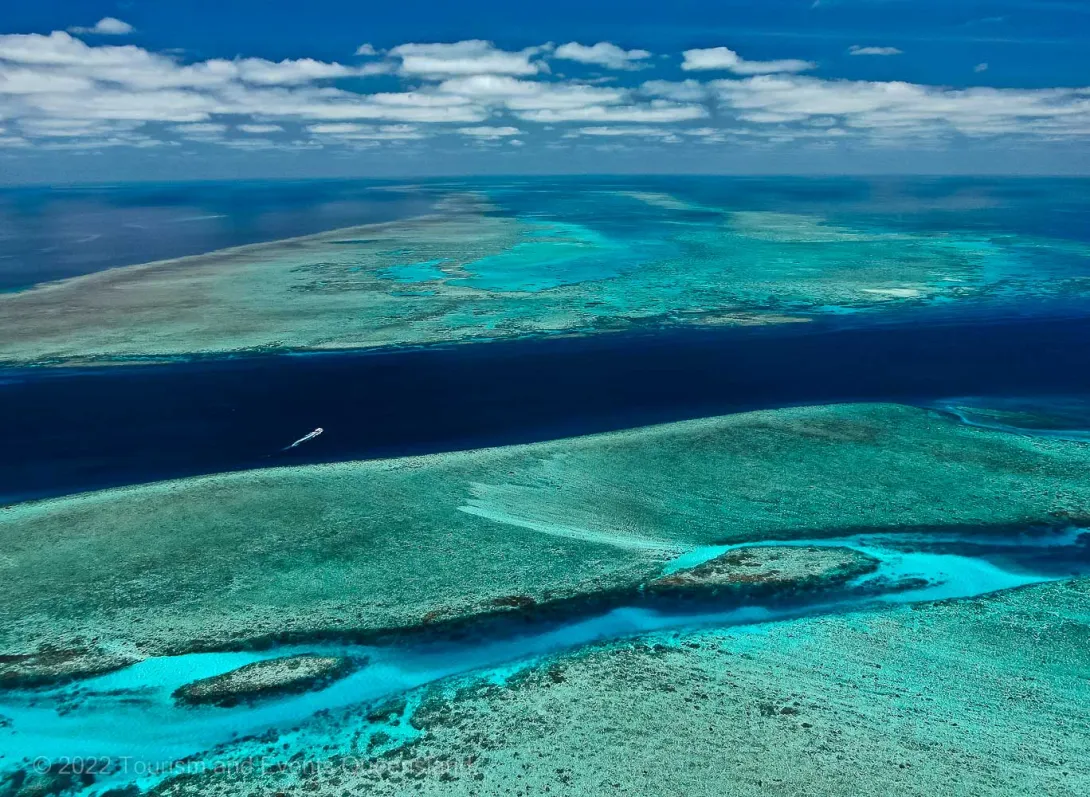
Great Barrier Reef Blueprint for Climate Resilience and Adaptation
The Great Barrier Reef Blueprint for Climate Resilience and Adaptation (Blueprint 2030) is the next chapter in addressing the challenge of climate change impacts on the Reef and will help us deliver on the objects of the Great Barrier Reef Marine Park Act 1975 to protect and conserve the Reef now, and into the future.
At the heart of Blueprint 2030 are five strategic goals that will drive how the Reef Authority adapts its management under a changing climate so we can progressively and effectively respond to the risks identified in the Outlook Report.
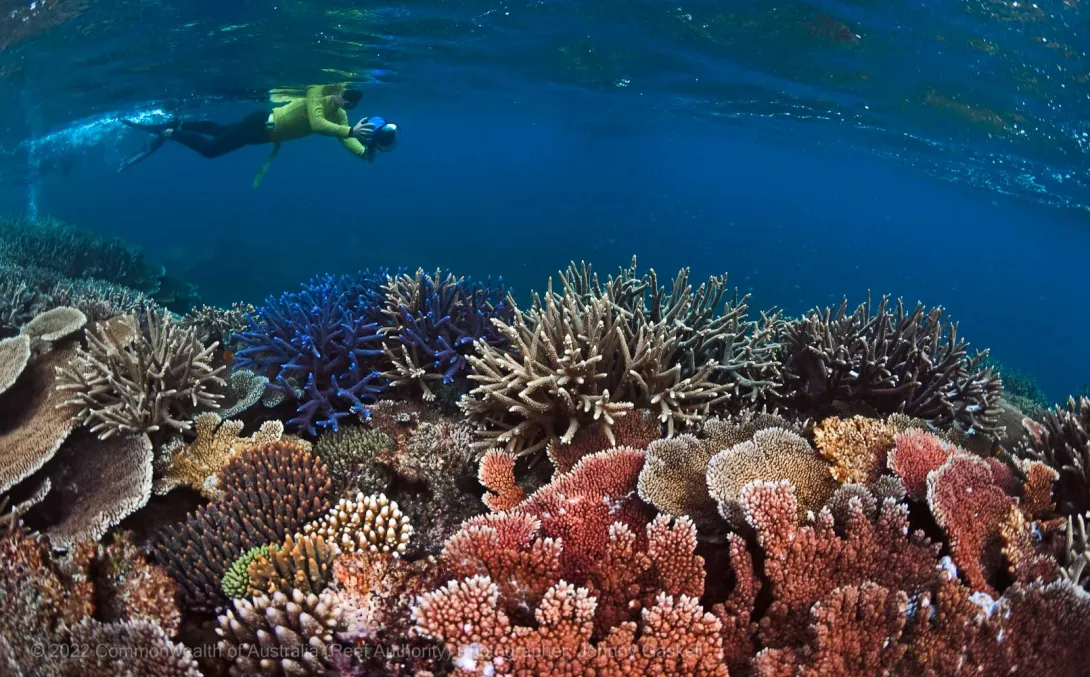
Aboriginal and Torres Strait Islander Heritage Strategy
The Great Barrier, Reef Marine Park Authority, acknowledges the continuing sea country management and custodianship of the Great Barrier Reef by Aboriginal and Torres Strait Islander Traditional Owners whose rich cultures, heritage values, enduring connections and shared efforts protect the Reef for future generations.
The Aboriginal and Torres Strait Islander Heritage Strategy for the Great Barrier Reef Marine Park was developed in partnership with the Indigenous Reef Advisory Committee and Reef Traditional Owners.
It is the Authority’s long-term strategy for working with Aboriginal and Torres Strait Islanders in protecting values and increasing co-management in the Marine Park. It is a significant step in honouring the knowledge and value of Traditional Owner connections to the Great Barrier Reef.
The strategy’s vision is to help keep the Indigenous heritage values of the Great Barrier Reef Marine Park strong, safe and healthy.
The strategy contains 30 actions to increase understanding, protection and promotion of Reef Indigenous heritage values. The actions also contribute toward Aboriginal and Torres Strait Islander aspirations for Sea Country and heritage management in the future. An overview of the Heritage Strategy vision, outcomes and actions can be found here.
Important contributing programs include the Traditional Use of Marine Resources Agreement program, Indigenous compliance training, the Authority’s Reflect Reconciliation Action Plan, and Sea Country values mapping.
Tourism Management Action Strategy
The Tourism Management Action Strategy outlines how tourism on the Great Barrier Reef will be managed and how the Authority will support tourism whilst protecting the Reef in the future.
The joint strategy with Queensland Parks and Wildlife Service was developed after targeted and public consultation and released in September 2021. It covers the Commonwealth and State Marine Parks and provides overarching guidance on the management of Reef tourism until 2035.
The Authority’s vision is for ecologically sustainable and culturally sensitive tourism, achieved through effective engagement with the Reef tourism industry, Traditional Owners and other partners. This supports transformational, world-leading visitor experiences on the Great Barrier Reef.
The strategy supports best-practice high-standard tourism. It encourages the presentation of the environment, biodiversity and heritage values of the Marine Parks, including appropriate recognition, respect and participation of Traditional Owners of sea country. It sets out specific actions to achieve the outcomes and objectives over the short, medium or long term.
Science for management
The Great Barrier Reef Marine Park Authority has a long history of working collaboratively with science and knowledge providers and basing our management on the best available science. We reflect on our knowledge gaps every few years, particularly following our five yearly Outlook Reports, and identify priority needs.
Scientific information is a critical part of evidence-based decision-making and reporting. A wide range of science and knowledge providers support an increasing knowledge base about the Great Barrier Reef, including research institutions, government agencies, universities, Traditional Owners, industry and the Reef community.
Our Science and Knowledge Needs for Management set out the Authority’s priority information needs. It has a focus on elements that will help improve our management and protection strategies over the long term.
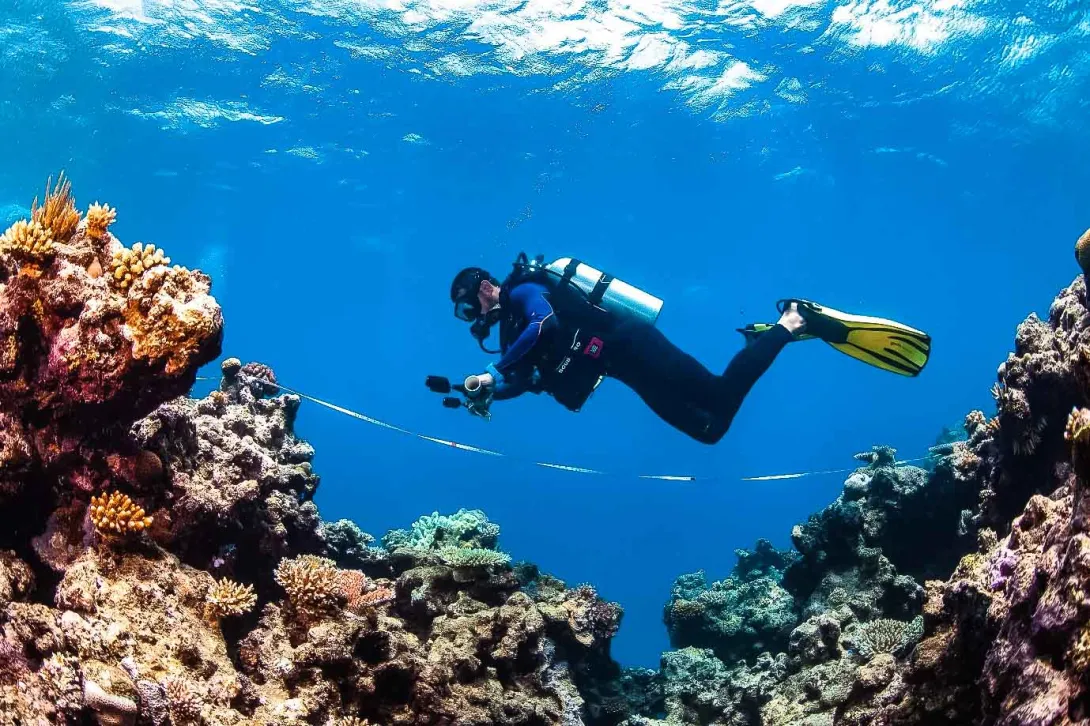
Management tools
The Marine Park Authority uses a range of tools, including on-ground management, policies, partnerships and regulations, to maintain the delicate balance between protecting and enabling sustainable use.
Regulatory tools — such as our Zoning Plan, management plans, permits and policies — enable us to manage activities in the multiple-use Marine Park, which extends over 99 per cent of the World Heritage Area.
The entire Marine Park is covered by a zoning plan. This operates similar to a town plan by identifying where particular activities can and cannot occur.
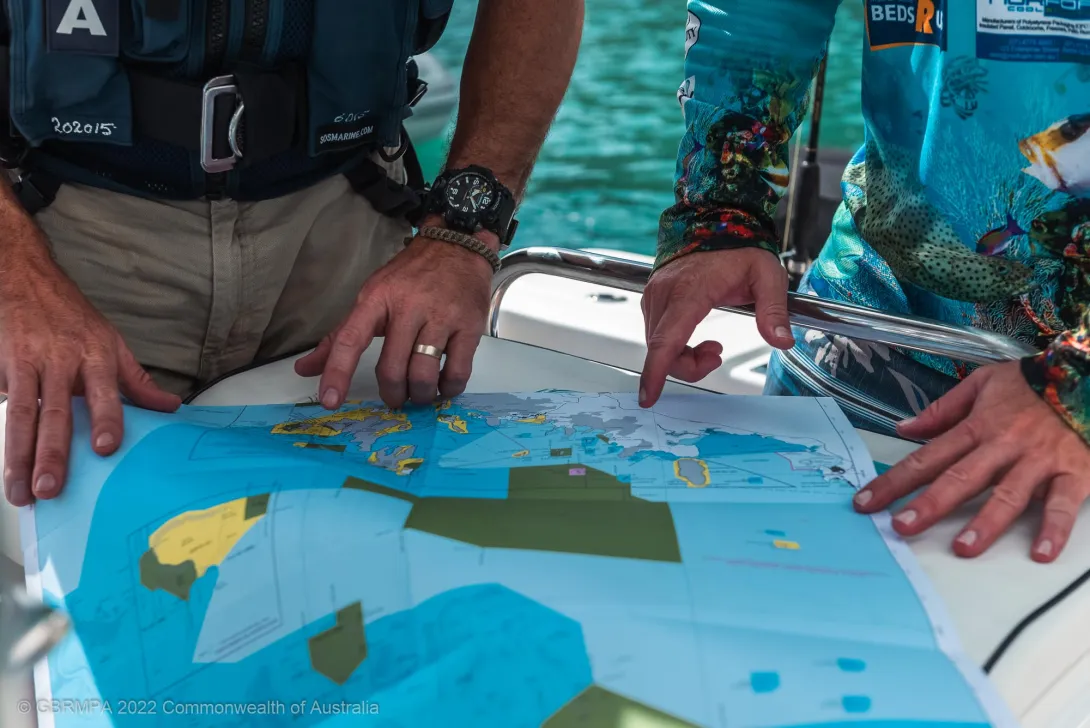
Management partnerships
Protection and management of the Great Barrier Reef region is a partnership between many government agencies, stakeholders and the public.
For example, the Authority and the Queensland Parks and Wildlife Service operate a joint field management program of education, compliance and enforcement to support rules aimed at protecting the ecosystem, and Fisheries Queensland undertakes much of the fisheries management within the Marine Park.
In addition, the Federal Environment Department is responsible for implementing the Environment Protection and Biodiversity Conservation Act 1999; Maritime Border Command provides aerial surveillance of the region; and the Australian Institute of Marine Science undertakes research.
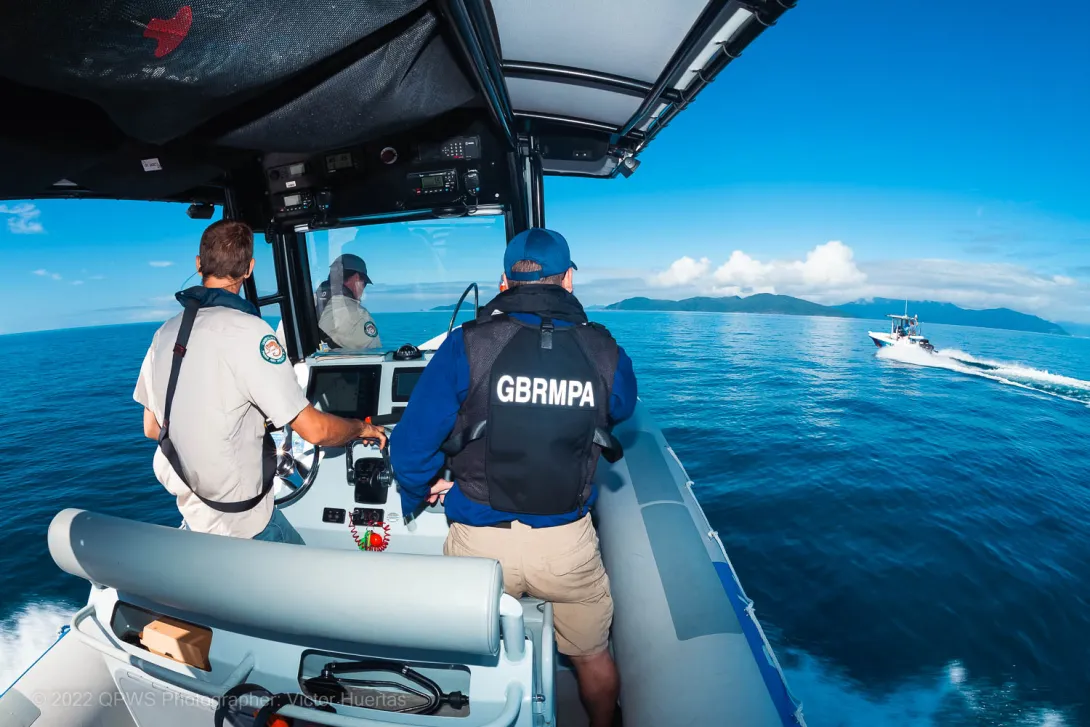
Strategic Assessment
Our 25-year management plan outlines how we will strengthen Reef management and new initiatives such as clear targets for action and Reef-wide integrated monitoring. It follows a comprehensive strategic assessment of the Great Barrier Reef World Heritage Area, which we undertook in conjunction with the Queensland Government. The assessment looked at the marine environment and adjacent coastal zone, examining how natural and heritage values can be protected into the future. The strategic assessment feeds in to the Australian and Queensland governments’ Reef 2050 Long-Term Sustainability Plan, an overarching framework for improving the Reef’s resilience.
- Strategic assessment - final report
- Program report - final report
- Overview brochure (PDF & MSWord)
- Supplementary report
Managing Reef threats
Climate change is the greatest threat to coral reefs worldwide. We are working to understand the risks of climate change and other threats to the Reef and helping reef communities and industries adapt to the changing environment. A resilient Reef is better able to withstand stress and cope with impacts of disturbances.
Each summer, we assess the health of reefs, as this part of the year poses a greater risk of extreme weather, particularly heat waves, cyclones and flooding. Other initiatives, including the Eye on the Reef app and our Marine Monitoring Program, help us keep up to date on the current conditions on the Reef.
- We also support key reef education facilities to undertake extensive reviews of their energy consumption, leading to large decreases in their climate footprints:
- The Lady Elliott Island resort has achieved 100 per cent carbon neutrality by upgrading its facilities and replacing diesel-run generators with solar-powered energy sources.
- The Low Isles largely use solar power and are working towards becoming totally carbon neutral.
We’ve also collaborated with industry groups to develop a range of environmental accreditation schemes and programs that encourage and reward reef businesses for reducing their climate footprints.
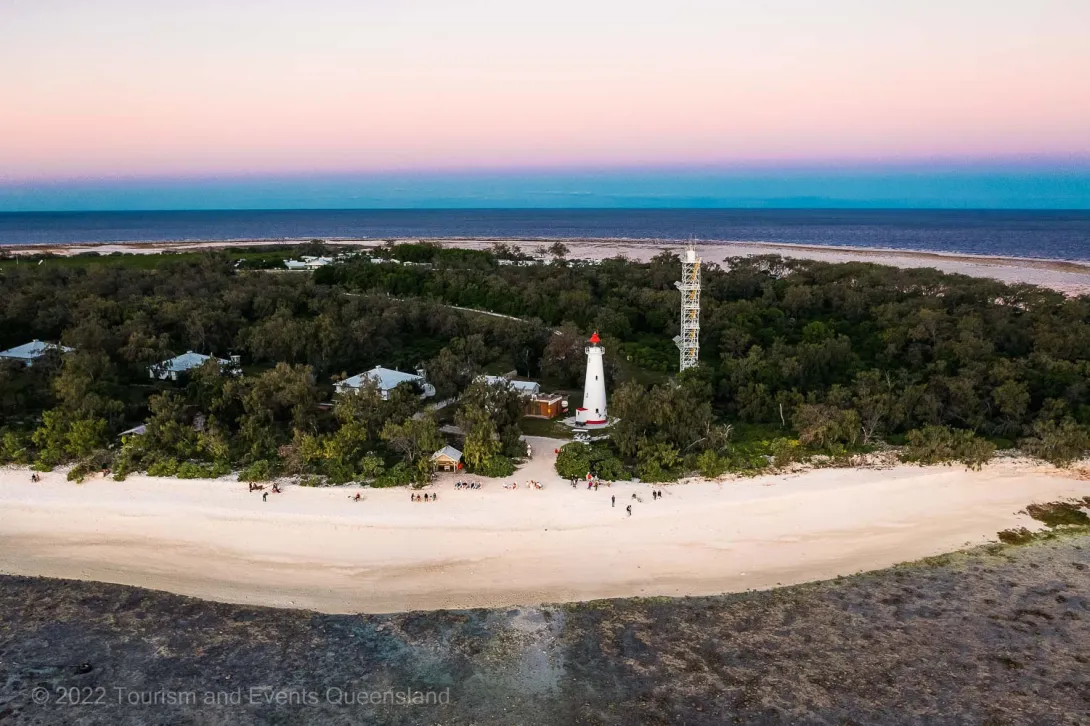
Visitor contributions
More than two million Reef visitors also support our management each year through an environmental management charge. We use the funds to monitor, manage and improve the resilience of the Great Barrier Reef for future generations.
